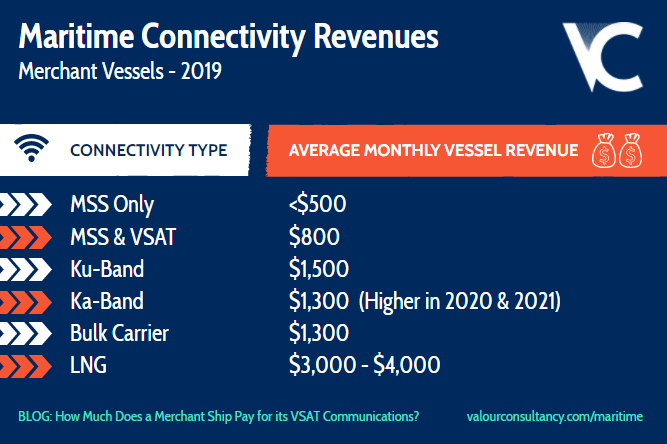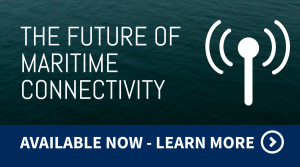Many years ago and in another industry, not so distant from maritime connectivity and VSAT communications… I wrote a piece providing viewpoints on “how much an airline would pay for an early release movie”. Early window content is the industry term. The article got me into a considerable amount of bother.
The fundamental issue being how secretive these negotiations were and Hollywood studios, airlines and their content service providers did not wish to shed any light upon the subject. Or I was terribly wrong in my viewpoints. I will stick to the former point.
Now after many years elsewhere, (similar to Yoda in swamp planet of Dagobah), I have decided to return to one of my favorite types of blogs.
To push myself further, I plan to write a series of pieces talking about how each type of commercial vessel (merchant, fishing, passenger, offshore and leisure) would pay for their connectivity solutions, typically VSAT and MSS.
Merchant Satellite Subscriptions
Addressing the title of this piece, merchant ships come in a number of shapes, sizes and purposes.
Breaking out the merchant market from a bird’s eye view; there are roughly 150,000 MSS and VSAT satellite subscriptions in the market. This may confuse some, due to the popularly touted figure of 80-90,000 merchant vessels (depending on your source and classifications). Clearly, this number is less than the number of maritime satellite subscriptions.
To quickly quash this, a significant number of large merchant vessels require multiple terminals for safety purposes. In addition, some vessels will also subscribe to a multitude of solutions for certain purposes. An example could be subscribing Ku-band VSAT services from Eutelsat, Fleetbroadband from Inmarsat and Certus from Iridium.
Emergence of VSAT Communications Technology
In the past, merchant operators were satisfied with just MSS (L-band) services, however, over the last decade the use of VSAT technology has become a dominant force within all commercial maritime vessels. There are around 20,000 VSAT merchant vessels active today.
Looking into the key types of merchant vessels. There is an array of different variations. And when speaking about shipping, certain regions are known for their trade. Asia and Northern Europe for commodity and container vessels, as an example.
Extra Special LNGs
One of my favourite VSAT communications research interviews of 2021 was with a Cypriot service provider. I won’t say which one or whom, however, it was most definitely one of my most entertaining.
It was almost like having a conversation with the Cheshire Cat in Alice of Wonderland. I went through a list of vessel types with “the Cat” providing their average monthly airtime fees the company gets for connectivity airtime packages. Bulk carriers, a short grunt and allocated to the bottom of the list of data usage and associated ARPU revenue. MPP and ro-ro vessels followed in quick succession, just above bulk carriers. General cargo and container vessels pique his interest and were placed in middle position of the rankings. PCC and vehicle carriers excite Mr Cat further.
Finally, we reached tankers, and LPG and LNG types cropped up.
With a delightful purr, “Beautiful, Joshua! We love both, although LNGs are extra special. LNGs are our favourites!”
I still chuckle at this answer.
VSAT Connectivity – Let’s Talk Numbers
Moving away from this abstract narrative, the merchant market is highly fragmented and different vessel types have a big difference in their respective airtime ARPU, depending on usage type, areas of coverage and congestion of such areas.
 In general, globally, the VSAT connectivity ARPU for a bulk carrier will just surpass $1,300 per month. An LNG tanker will be in the range of $3,000 to $4,000 per month with lucrative value-add service inclusions.
In general, globally, the VSAT connectivity ARPU for a bulk carrier will just surpass $1,300 per month. An LNG tanker will be in the range of $3,000 to $4,000 per month with lucrative value-add service inclusions.
As such, the customer type and their fleet of vessels are very important. Also, I will also state the more prestigious customers know how valuable their business is worth and therefore expect very good service and also heavy discounts. In fact, some prestige names are not as lucrative as some outsiders perceive.
In 2019, Valour Consultancy estimated the average connectivity package per merchant vessel was around $800 (combining both MSS and VSAT services). MSS service per vessel are less than $500 per month generally.
For Ku-band, this works out around $1,500 and Ka-band around $1,300. The latter will have gone up in 2020, too.
To keep up with our latest analysis of the maritime sector, subscribe to our newsletter and connect with our team on LinkedIn.







